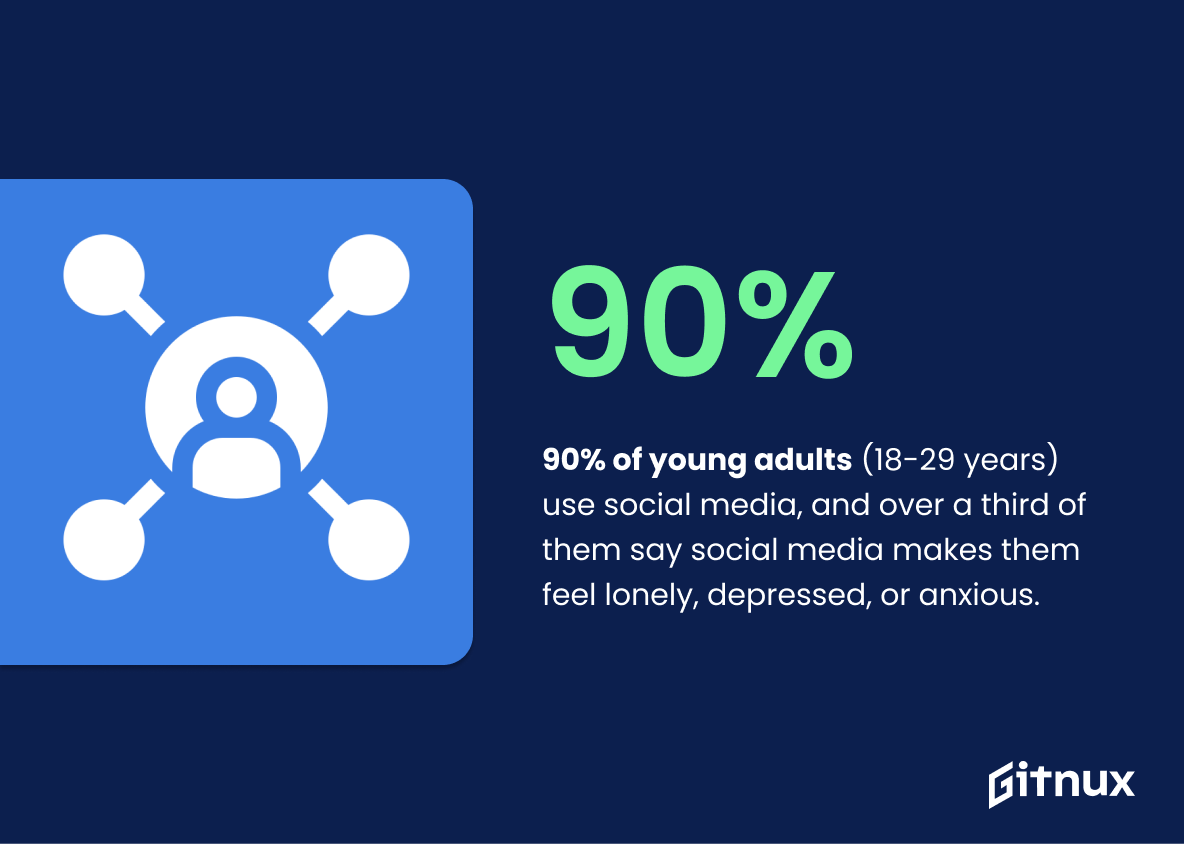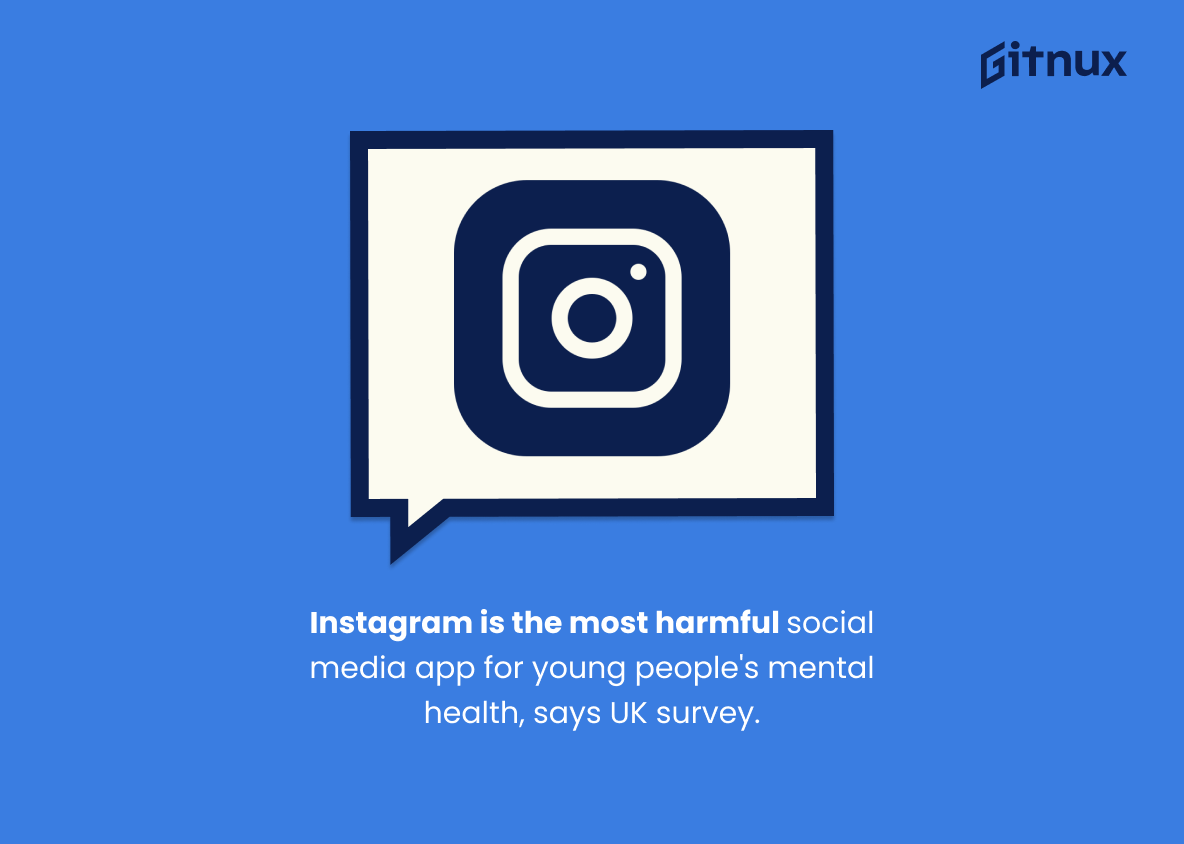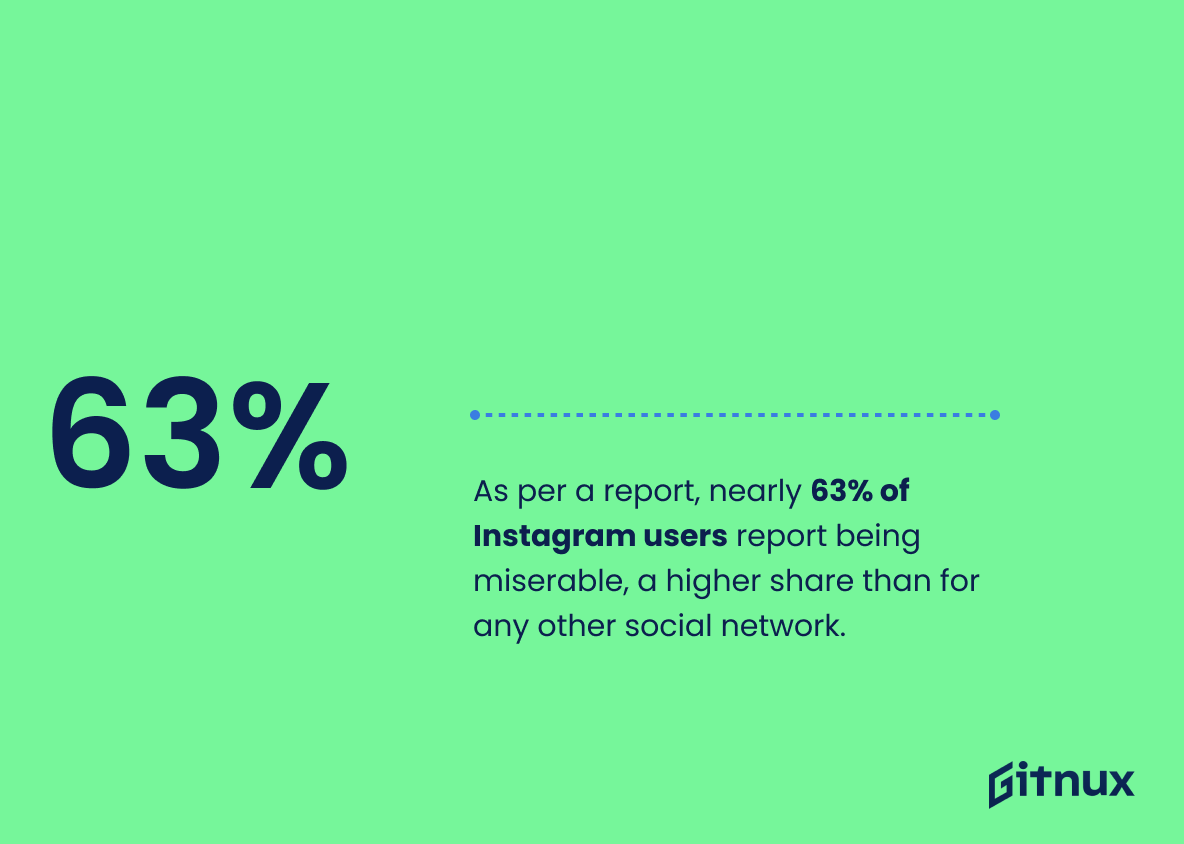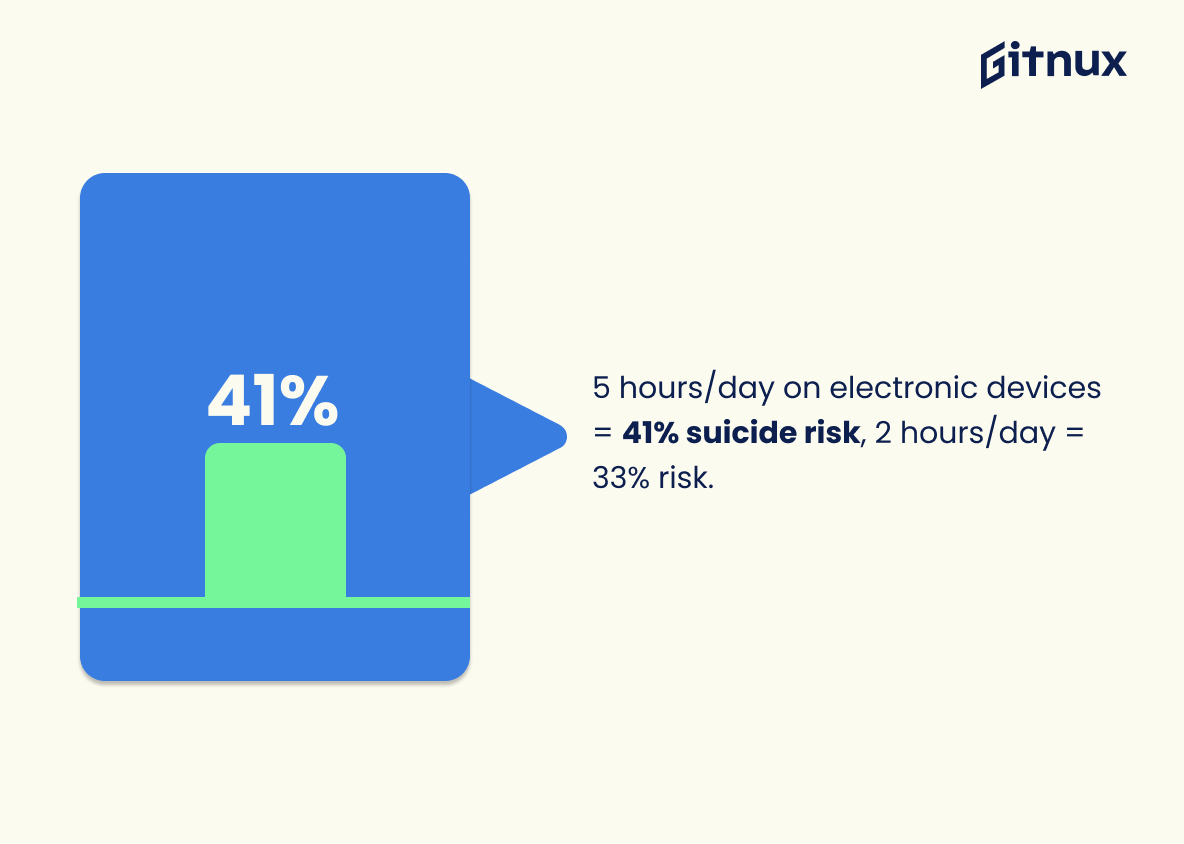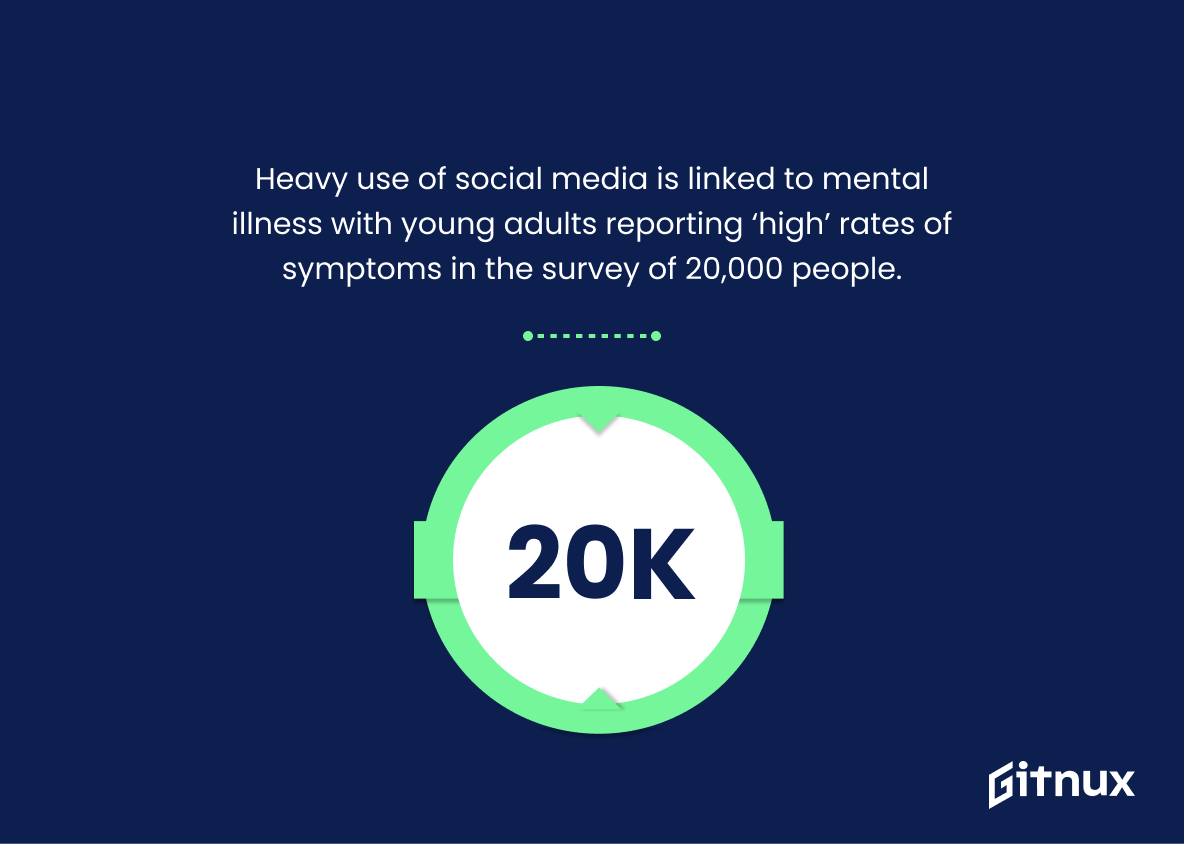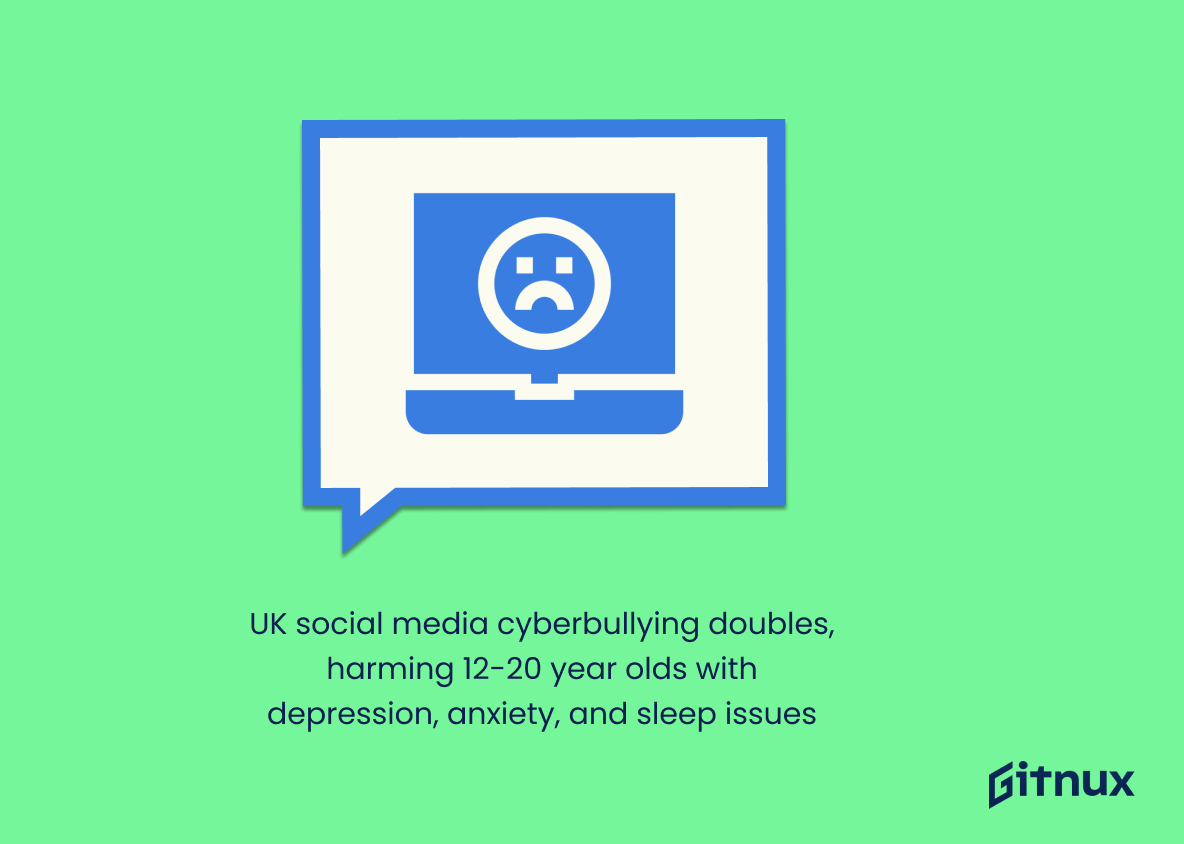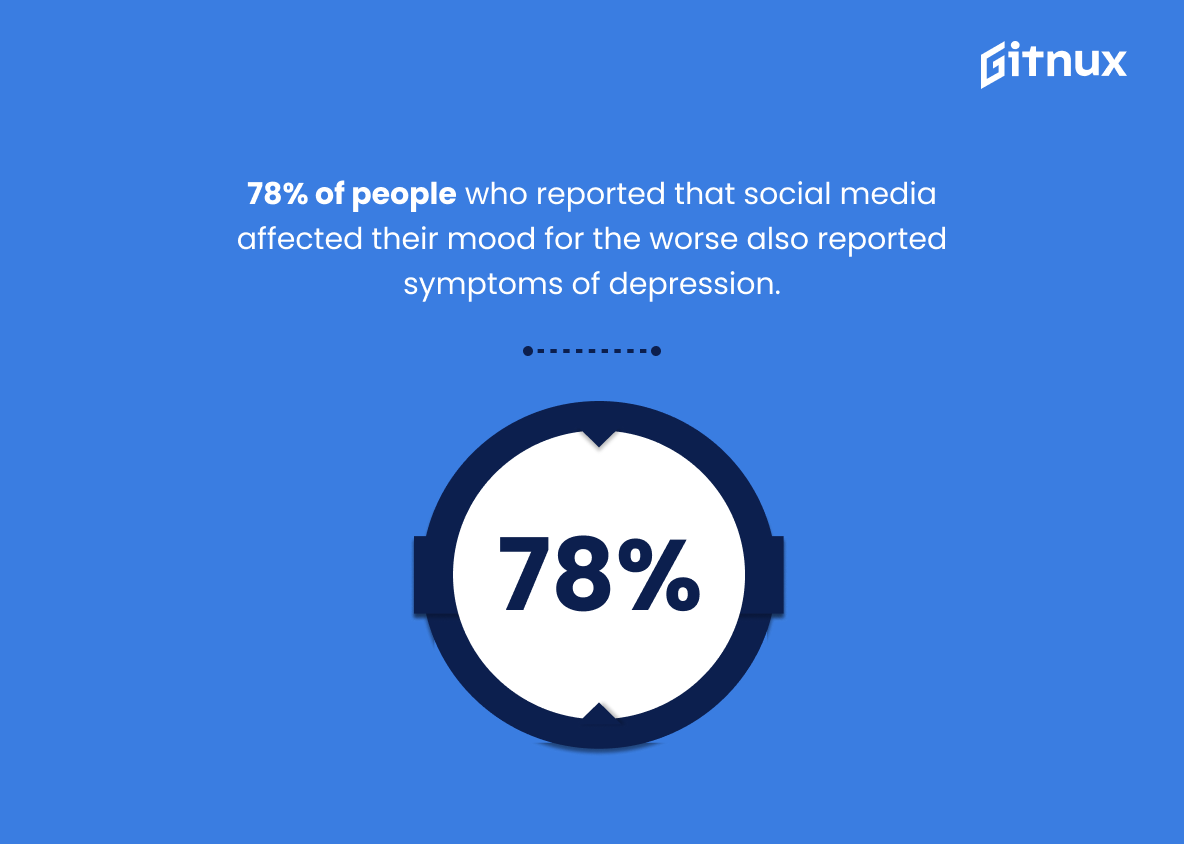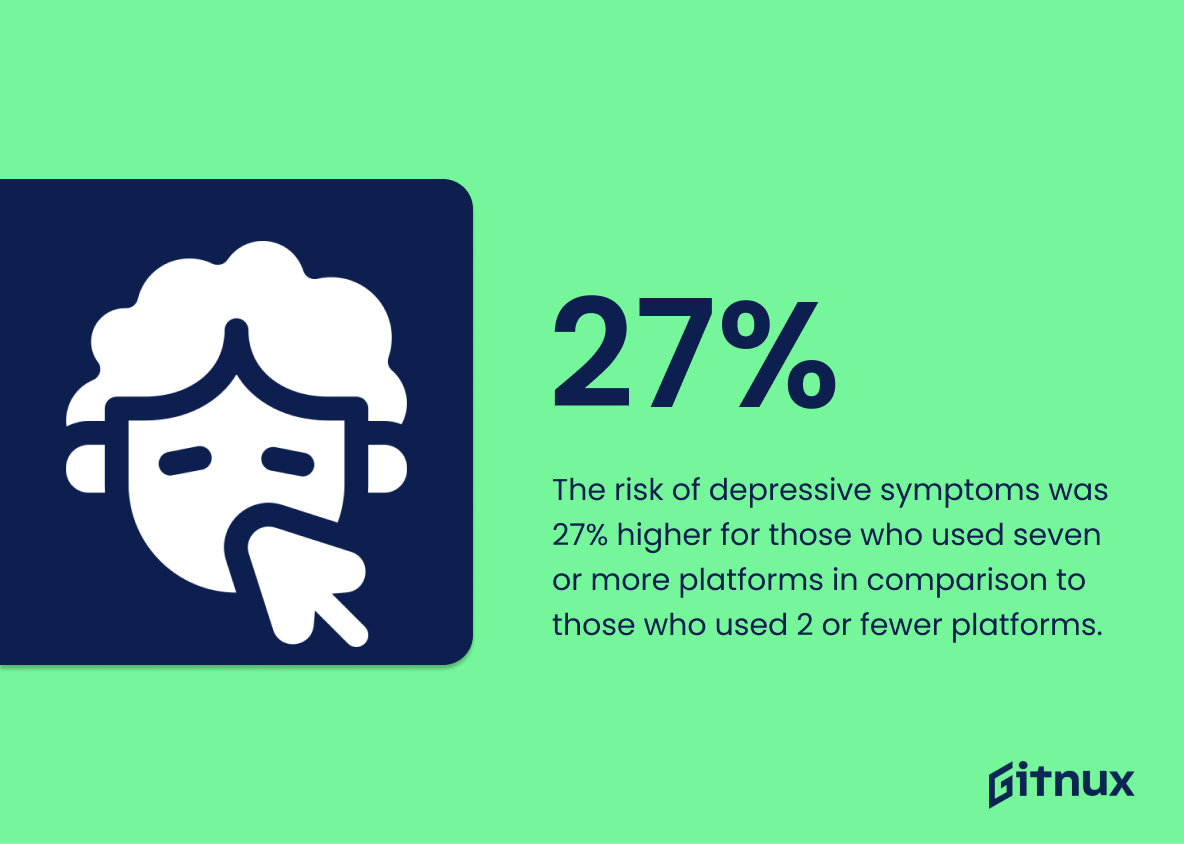In the ever-evolving digital world where social media seemingly controls the reins of societal norm, we’ve reached an era where our likes, tweets, shares, and posts intertwine inseparably with our daily routines. But amidst all the likes and followers’ vibrancy, a pressing issue is attempting to surface – the undeniable impact of social media on mental health. Diving into a quieter, yet critically significant side of digital life, this blog post aims to discuss and unpack essential Mental Health and Social Media Statistics. Here, we’ll explore and discern how these two seemingly different worlds collide, leading to striking outcomes that could shape our understanding and our approach to digital wellbeing in the twenty-first century.
The Latest Mental Health And Social Media Statistics Unveiled
90% of young adults (18-29 years) use social media, and over a third of them say social media makes them feel lonely, depressed, or anxious.
Interpreting this revealing statistical snippet sheds pivotal light on the paradoxical relationship between social media usage and mental health in young adults. The fact that a staggering 9 out of 10 from this age bracket are active on these platforms alludes to the pervasiveness of social media in daily life. However, the plot thickens when over one-third confess that these networking sites stir feelings of loneliness, depression, or anxiety.
This glaring juxtaposition underlines the quintessential double-edged sword that social media presents. On one end, it offers connectivity and a sense of belonging, while on the flip side, it can contribute to emotional turmoil.
In the context of a blog post discussing Mental Health and Social Media Statistics, this fact is invaluable. It uncovers the grim underbelly of social butterfly platforms, emphasizing the urgent need for comprehensive research, improved digital literacy, mental health awareness and proactive intervention strategies.
Feelings of loneliness, depression, and anxiety among young adults, in an era overflowing with communication possibilities, signal a call to action. It’s an urgent plea to address the mental and emotional implications of social media, the plight of the ‘always-online’ generation, and the cry for help echoing across our perfectly curated feeds.
According to a survey by Royal Society for Public Health in the UK, Instagram is the most harmful social media app for young people’s mental health.
Beautifully illuminating the darker side of digital life, the aforementioned statistic dovetails into the escalating discussion around mental health and social media. Originating from the respectable Royal Society for Public Health in the UK, the survey indicating Instagram as the most detrimental social media app for youth mental health serves as an alarming bell toll in our understanding of the digital era’s psychological toll.
In the grand tapestry of a blog post exploring the intersection of mental health and social media, this statistic stands as an impactful thread. Drawing immediate attention, it signals readers to the gravity of the issue, opening their eyes to this quite shocking revelation. More than just numbers, the statistic forms a compelling narrative around the unseen effects of our online habits, setting the stage for further discourse around the consequences of social media on our youth’s mental wellbeing.
Thus, this statistic offers an urgent wake-up call, a sobering reality check if you will, laying bare the stark truth about the psychological pitfalls of arguably the most popular image-sharing platform. This allows the blog to provide a balanced view, stimulating thoughtful discussions, and highlighting the urgency to address the issue while shaping online habits and policies to protect mental health.
As per a report, nearly 63% of Instagram users report being miserable, a higher share than for any other social network.
In the pulsating heart of a blog post addressing Mental Health And Social Media Statistics, the consideration of the fact that nearly 63% of Instagram users report being miserable – the highest compared to other social networks – assumes a pivotal role. The revelation of this statistic illuminates the consequential correlation between Instagram use and the state of psychological distress reported by its users. It not only fosters a deeper understanding of the social media platform’s emotional impacts, but also invokes crucial contemplation on the potential factors contributing to the users’ discomfort. This data serves as an invaluable guidepost for psychologists, educators, parents, and policymakers as they devise strategies to mitigate this unhappiness and construct a healthier digital ecosystem. It demonstrates the urgent need for interventions, like digital literacy programs, mental health awareness campaigns, and platform-specific changes, to alleviate the toll on mental health.
41% of teens who spend five hours per day on an electronic device have at least one suicide risk factor, compared to 33% of teens who spend two hours a day on an electronic device.
Diving into the digital realm, those numbers unveil a dark corner of the intersection of technology and teen mental health. When contrasted, the alarming 8% increase in suicide risk factors among teens who spend five hours per day on an electronic device as opposed to those spending 2 hours is a striking piece of evidence. It underlines the more time they immerse themselves in the electronic world, the higher their vulnerability to mental health issues. Just as more screen time can amplify the negatives like cyber bullying or self-esteem issues, less of it can provide a protective buffer. Thus, this statistic serves as a glaring red traffic light in the convergence of social media and mental health, advocating for a more mindful use of technology.
Heavy use of social media is linked to mental illness with young adults reporting ‘high’ rates of symptoms in the survey of 20,000 people.
Plunging into the depths of this compelling statistic, we uncover an alarming correlation between heavy social media usage and mental illnesses in young adults. This statistic paints a vivid picture and serves as a wake-up call, spotlighting our screen-infused lifestyle’s potential dark side in hurling an unsettling 20,000 data points into the limelight of our discussion about Mental Health and Social Media.
In the spectacle of raw numbers, this statistic stands front-stage, whispering tales of anxiety, depression, and mental health struggles magnified by the incessant hum of social media interactions. It is a loud gong in the quiet room, underscoring the urgency and the scale of the mental health crisis among digital natives.
In the intricate weave of our blog post narrative, this statistic is a pulsating heartbeat, adding weight and credibility to our arguments, and advocating for broader conversations, strategies for intervention, and more mindful digital habits. Every number from this survey has a human story tied up in it, making it not only statistically significant but existentially potent too. Beware the siren song of constant connectivity, it seems to say; within its luring call might lie the seeds of a secret distress.
60% of people using social media reported that it has impacted their self-esteem in a negative way.
A glaring revelation from this statistic—the fact that 60% of social media users confessed to a detrimental effect on their self-esteem—serves as a critical beacon illuminating the potential hazards lurking in our digital landscape in the blog post about Mental Health And Social Media Statistics. Analysing these trends not merely quantifies the impact on the collective, it’s a call to action. The digits weave a cautionary tale about the omnipresent digital platforms, spotlighting a dark dimension of social networking sites. They expose a harsh paradox where platforms designed to connect us globally can leave us feeling more disconnected and less confident. Nestled within this statistic is an urgent dialogue for better mental health support and education in the context of our increasingly digital lives.
According to a report, cyberbullying on social media has doubled in the UK, affecting 12-20 year olds adversely and leading to issues like depression, anxiety, and sleep problems.
Delving into this potent statistic, it underscores a formidable link between cyberbullying on social media platforms and mental health problems among young individuals in the UK. This sharp increase in cyberbullying incidents amplifies the potential for developmental disorders, namely depression, anxiety, and sleep irregularities. When crafted into a blog post centered on social media’s impact on mental health, it would provide clear evidence of how the digital environment is reshaping interpersonal interactions, often to detrimental effects. Not only does it bring attention to the severity of the issue, but it also serves as a call to action for parents, educators, mental health professionals, and policy makers to mitigate the risks associated with social media use in younger populations.
64% of people who have experienced online harassment also report symptoms of anxiety and depression.
Peeling back the layers of this revealing statistic helps us illuminate the deeply intertwined relationship between online harassment and the subsequent onset of anxiety and depression symptoms. An alarming 64% of people facing cyberbullying bear the brunt of these severe mental health repercussions, a figure that commands immediate attention.
This statistic underlines a critical narrative in a blog post about Mental Health And Social Media Statistics; the dual-edged sword that is the internet. While it provides a platform for global connection and communication, it also opens up dark alleys of online harassment exacerbating mental health issues.
The significance of this statistic is not merely in its numeric value but its powerful implication on the way our interactivity with the digital world shapes us. It compels us to contemplate and advocate for more respectful and empathetic online interactions, to turn the tide on these rising rates of anxiety and depression. Harnessing the power of this statistic, we can inform, educate, and compel readers towards creating a more compassionate cyber environment.
57% of people compare themselves to others they see on social media, a habit linked to low self-esteem and mental health issues.
Delving into the ties that bind social media use and mental health, we unearth a striking statistic that paints a vivid narrative of our digital age. A staggering 57% of individuals are embroiled in a comparison game, measuring their lives against those they observe on social media platforms. This percentage is not just a number – it quantifies an insidious trend that could potentially undermine self-esteem and trigger mental health difficulties. This stark truth provides evidence of the magnitude of the issue and justifies further discussion and exploration in a blog post about “Mental Health and Social Media” statistics. Essentially, the figure spearheads the argument for mindful social media usage to ensure psychological well-being. It’s not merely about the content we consume but also about how it alters our perception of self, inciting comparisons and potentially fuelling mental health issues. Therefore, it becomes crucial to consider this statistic as we continue the conversation on mental health in a digitally-dominated world.
78% of people who reported that social media affected their mood for the worse also reported symptoms of depression.
The considerable magnitude of the overlapping fraction – 78% of the ones who reported a negative effect on their mood due to social media usage also confessed to depression symptoms – serves as a glaring mirror reflecting the profound connection between our digital behavior and mental health state. It accentuates the need to sit up and take notice not only of our own usage patterns but also of those we care about. In a panorama where social-media has seeped throughly into our daily lives, such statistics are invaluable reminders about the potential psychological pitfalls lurking behind seemingly harmless screens. Hence, these numbers shouldn’t be merely details in the landscape of mental health discussions, but key landmarks helping us navigate through the labyrinth of virtual interactions on our pursuit of wellbeing.
The risk of depressive symptoms was 27% higher for those who used seven or more platforms in comparison to those who used 2 or fewer platforms.
Delving into the captivating world of mental health and its intriguing intersection with social media, this vital statistic serves as a critical narrative. It paints a startling portrait of how prolific use of multiple platforms amplifies depressive symptoms by 27%, raising alarming signals for those navigating seven or more channels as compared to their counterparts on two or fewer. This revelation illuminates the potent, often underestimated, influence of social media in contributing to mental health disparities, making it an area of urgent focus in our digital age.
Conclusion
In sum, the intersection between mental health and social media is an area of profound significance. Essentially, social media presents both pros and cons for mental health. While it can foster a sense of community and provide vital information, too much exposure can lead to anxiety, depression and body image issues. Social media providers and users must strive for a balanced usage and prioritize online safety to reap the benefits whilst minimizing negative implications. These statistics underline the pressing need for ongoing research and interventions to help mitigate the threat it postures, while universities, schools, and workplaces also have a key role to play in promoting healthy social media habits. In the digital age, understanding these interactions is not an option, but a necessity.
References
0. – https://www.www.bmj.com
1. – https://www.www.fnu.edu
2. – https://www.www.bbc.com
3. – https://www.www.rsph.org.uk
4. – https://www.www.businessofapps.com
5. – https://www.www.jrheum.org
6. – https://www.www.variety.com
7. – https://www.www.ncbi.nlm.nih.gov
8. – https://www.www.apa.org
9. – https://www.www.sweetyhigh.com
